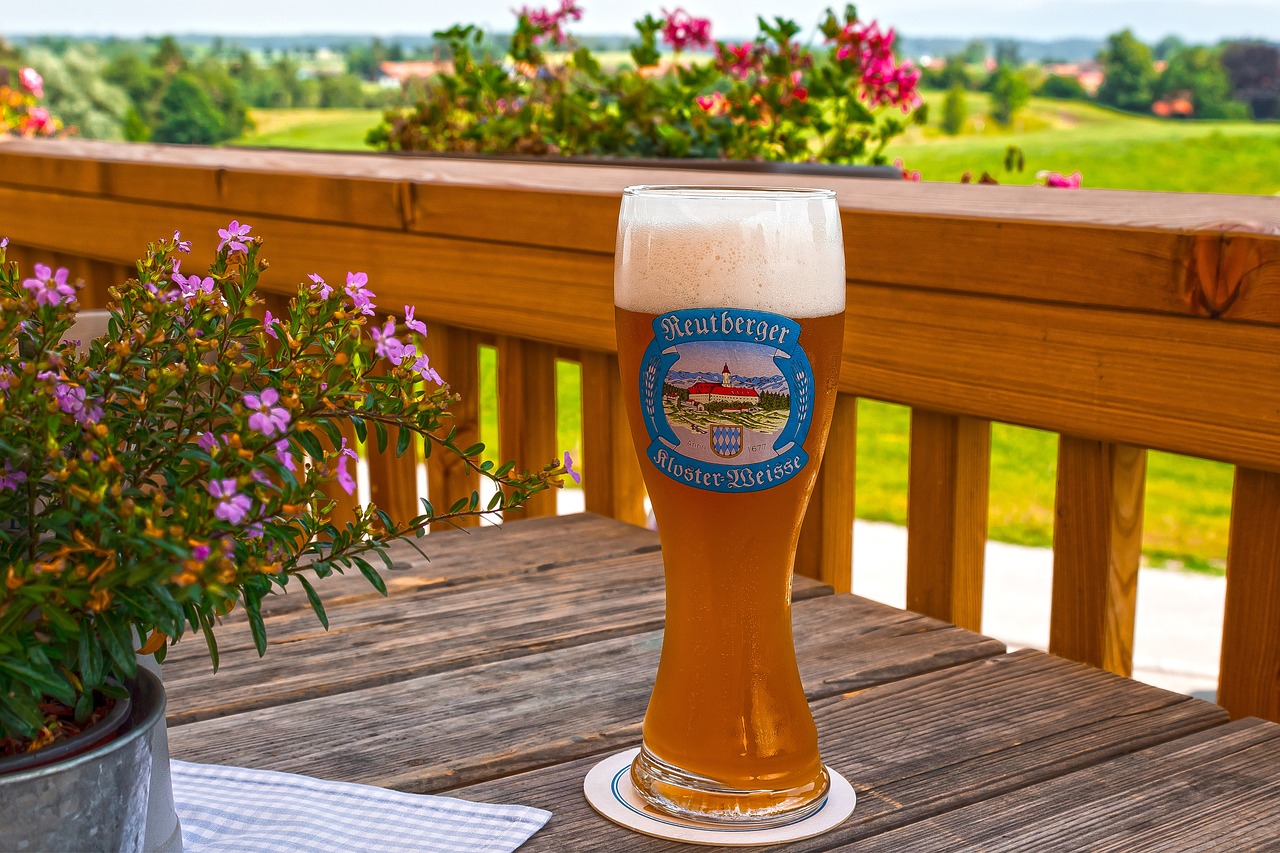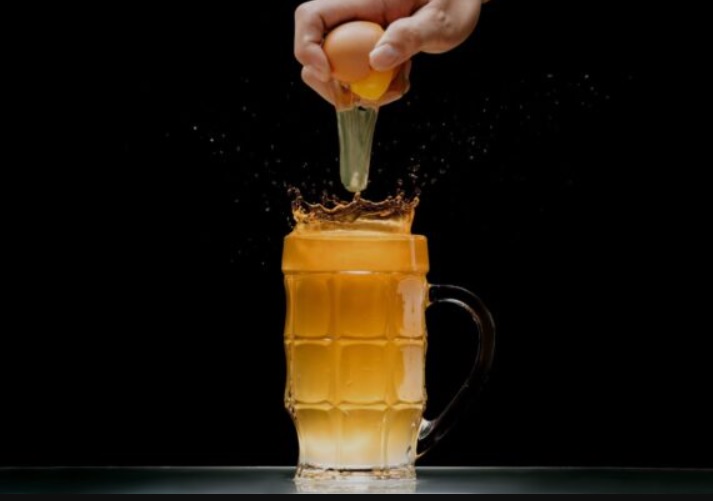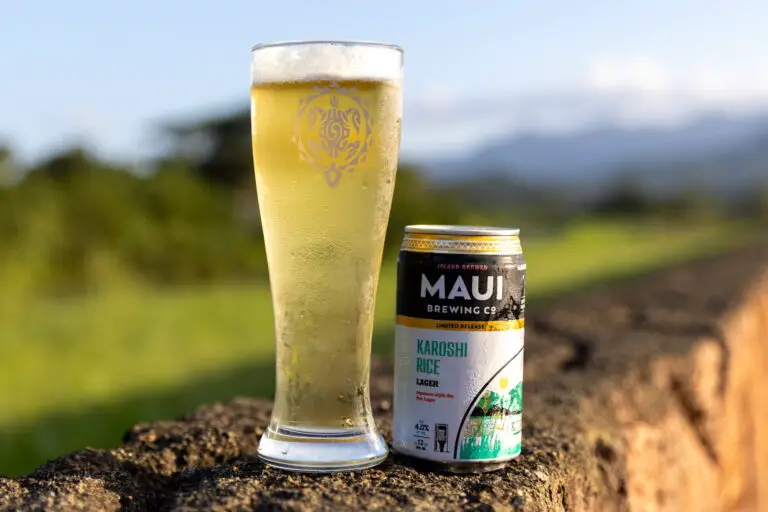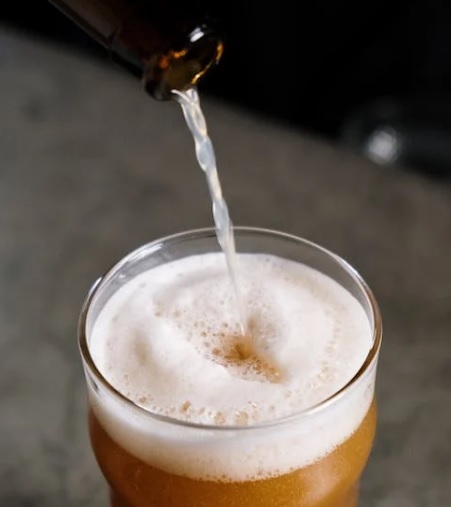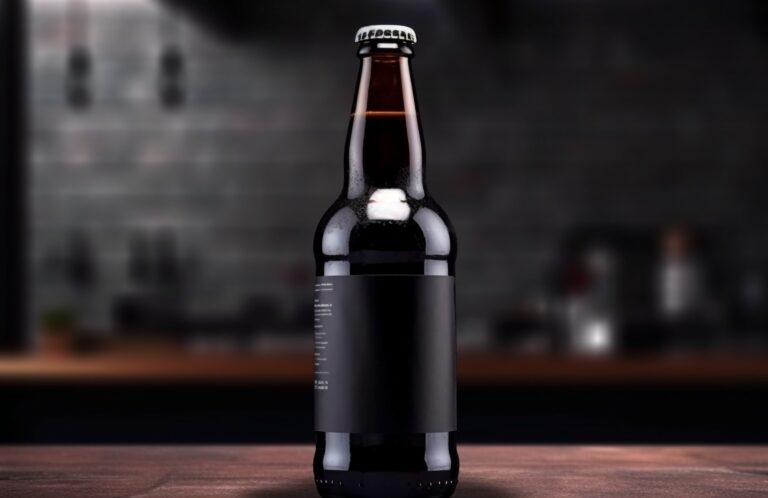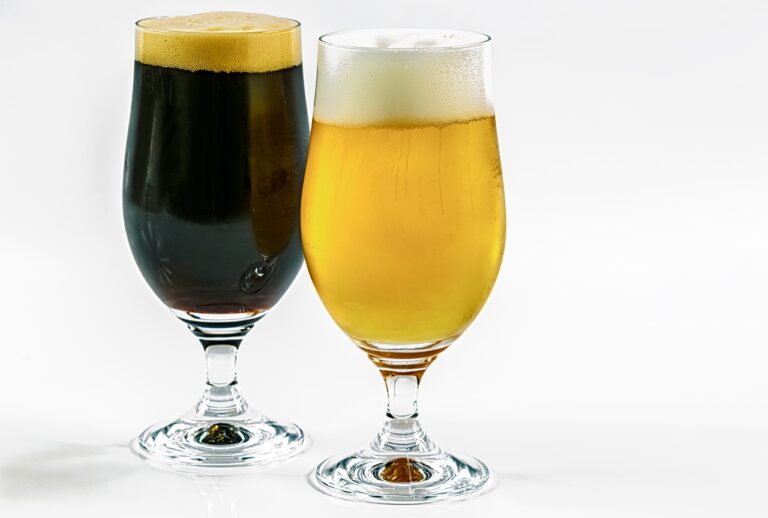What Is White Ale?
So, What Is White Ale?
You probably heard about white ale while reading about beer. You may have seen it on the menu at your local bar. Or when you visited a new bar. So what is it? What is white ale?
White ale, known as witbier, is a refreshing beer style rooted in Belgium and the Netherlands. What sets white ale apart is its distinctive hazy appearance and crisp, yet slightly creamy, mouthfeel. This beer is characterized by a blend of malted barley and wheat, often accompanied by a unique combination of spices and botanicals.
These ingredients contribute to its subtle citrus, fruity notes, and hints of spices and herbs. White ale is typically unfiltered, resulting in its cloudy appearance and is lightly carbonated. This beer style is known for its approachable taste, making it a popular choice for those looking for a flavorful yet easy-drinking option.
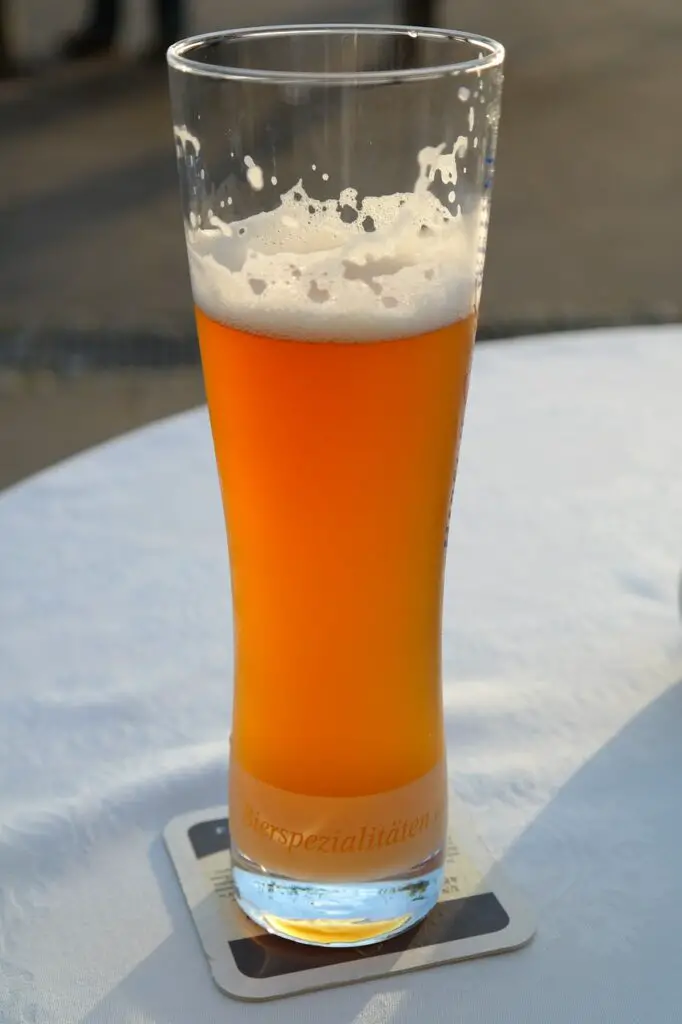
What’s The History Behind White Ale?
Witbier, as it’s known in Belgium and the Netherlands, has deep historical roots in the lowland regions of these countries, dating back several centuries. Its origins can be traced to the medieval period when beer brewing was vital to daily life. Here’s a brief look at the historical evolution and significance of white ale:
- Medieval Roots: White ale has its origins in the medieval brewing traditions of Belgium and the Netherlands. During this time, beer was brewed in monasteries and homes, primarily for local consumption. These early iterations of white ale were often made with locally available ingredients, including barley, wheat, and a mix of spices.
- The Use of Wheat: What distinguishes white ale from other beer styles is its use of wheat in the grain bill. This addition of wheat contributed to the beer’s distinctive cloudy appearance and smooth mouthfeel. In contrast, many other beer styles of that era were brewed predominantly with barley.
- Botanicals and Spices: White ale also gained its unique character from adding a variety of spices and botanicals. These ingredients were often chosen based on what was available locally and seasonally. Common additives included coriander, orange peel, and other herbs, which imparted the beer’s signature aroma and flavor.
- Historical Importance: White ale played a crucial role in the history of beer because it represented a departure from the traditional beer styles of the time, which were often darker and heavier. The use of wheat and spices gave white ale a refreshing and aromatic profile that appealed to a broader audience. It was considered a beer of the people, enjoyed by both peasants and nobility.
- Commercial Brewing: As brewing techniques evolved and commercial breweries emerged in the 19th and 20th centuries, white ale faced a decline in popularity. However, it never disappeared entirely, and some traditional breweries in Belgium continued to produce witbier.
- Modern Resurgence: In recent decades, there has been a resurgence of interest in traditional beer styles, including white ale. Craft breweries in Europe and worldwide have embraced the style, often adding their unique twists to classic recipes. This revival has introduced a new generation of beer enthusiasts to the delights of white ale.
What Is White Ale? What Makes White Ale Special?
White ale is a special style of beer – and here’s why:
Ingredients:
- Malt: White ale typically includes a blend of malted barley and wheat in its grain bill. The use of wheat, often around 30-50% of the grain mixture, gives the beer its characteristic cloudiness and contributes to its smooth, slightly creamy mouthfeel.
- Spices and Botanicals: One of the defining features of white ale is the addition of spices and botanicals. Common ingredients include coriander seeds and bitter orange peel. These spices provide a delicate complexity to the beer’s flavor profile, with hints of citrus, floral, and herbal notes.
Appearance:
- Cloudy and Pale Color: White ale is aptly named for its cloudy, pale appearance, which can range from a pale straw color to a deeper golden hue. This cloudiness is a result of the wheat used in the brewing process, which leaves behind proteins that create a hazy, unfiltered appearance.
- Carbonation: White ale typically has a moderate to high level of carbonation, contributing to its effervescent and refreshing quality. This effervescence can be visually observed through the formation of a foamy, white head when poured into a glass.
Aroma and Flavor:
- Citrus and Fruity Notes: White ale is known for its bright and inviting aroma, often featuring citrusy and fruity notes. These can include hints of orange, lemon, and sometimes even tropical fruit aromas, which result from using spices and botanicals, particularly orange peel.
- Spicy and Herbal Undertones: The spices, particularly coriander, lend a gentle spiciness and herbal quality white ale. This complexity complements the fruity notes, creating a harmonious and refreshing flavor profile.
- Yeast Character: The yeast used in white ale fermentation also plays a significant role in its flavor. Belgian yeast strains, in particular, can impart subtle fruity esters and a slightly peppery or clove-like spiciness.
Alcohol Content and Bitterness:
- Moderate Alcohol Content: White ale typically falls within a moderate alcohol by volume (ABV) range, often between 4% and 5.5%. This makes it the perfect beer for warm weather or casual drinking.
- Low Bitterness: White ale is characterized by its low to moderate bitterness. The focus here is on the harmonious interplay of spices, citrus, and yeast character rather than a pronounced hop bitterness. This makes it accessible to a wide range of palates.
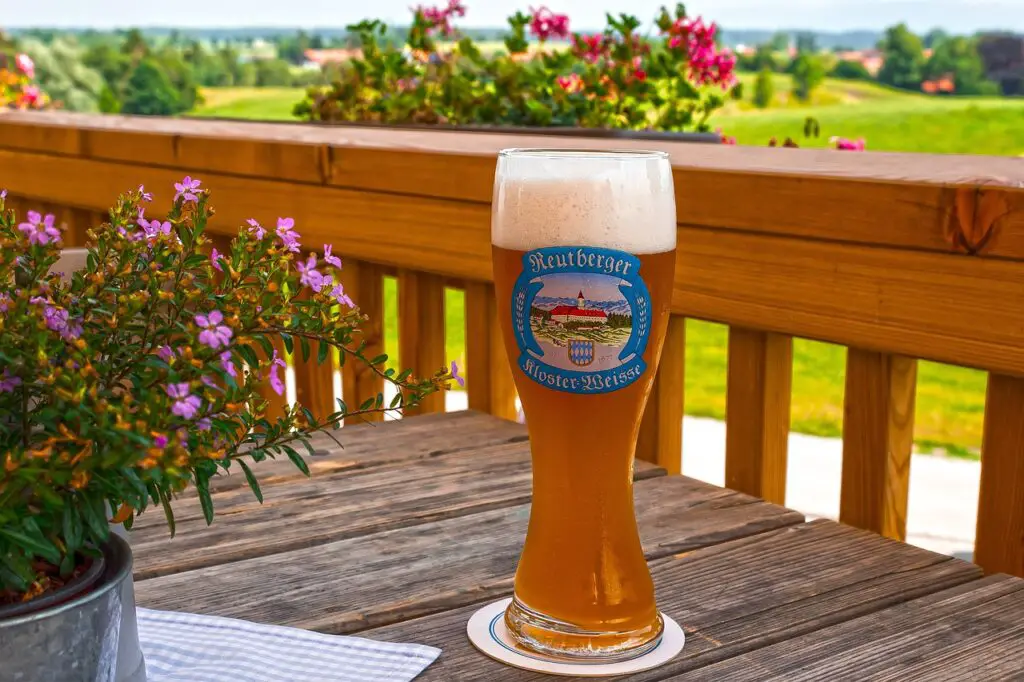
How Is White Ale Brewed?
The brewing process of white ale, or witbier, involves several steps, and while it shares some similarities with other beer styles, there are specific methods that give it its unique character. Here’s an overview of how white ale is typically brewed:
- Mashing: The brewing process begins with mashing, where a combination of malted barley and wheat (typically 40 to 60 percent is wheat, while the barley used is pale – pilsner type) is mixed with hot water to create a mash. This step is critical to extracting sugars from the grains. Wheat is a defining characteristic of white ale and contributes to its cloudiness and smooth mouthfeel.
- Boiling: After mashing, the liquid extract, known as wort, is boiled. During this phase, hops are added to the wort. However, hops are used sparingly in white ale, primarily for their mild bitterness and aroma contribution. The boil focuses on pasteurizing the wort and extracting flavors from the spices and botanicals.
- Addition of Spices and Botanicals: The key distinguishing feature of white ale is the addition of spices and botanicals. Common ingredients include crushed coriander seeds and bitter orange peel. These are typically added toward the end of the boil or during the whirlpool phase, allowing their flavors and aromas to infuse into the beer.
- Cooling: After boiling, the wort needs to be rapidly cooled to a temperature suitable for fermentation. This is typically done using a heat exchanger or by transferring the hot wort to a fermentation vessel and using a cooling jacket.
- Fermentation: White ale is typically fermented with Belgian ale yeast strains, which play a crucial role in shaping the beer’s flavor profile. The yeast produces fruity esters and phenolic compounds that contribute to the beer’s aroma and taste. The fermentation temperature is often kept on the warmer side, which enhances yeast’s character.
- Bottling and Conditioning: After fermentation is complete, the beer is typically conditioned in the fermentation vessel for a brief period to allow flavors to mature. It’s common for white ale to be bottle-conditioned, meaning a small amount of sugar and yeast is added just before bottling to carbonate the beer naturally. This can result in a fine layer of sediment in the bottle, adding to the beer’s complexity.
- Serving Techniques: White ale is traditionally served in a specific manner. It’s often poured into a wide, bowl-shaped glass, such as a tulip or weizen glass, to capture its aroma. The beer is usually swirled gently to rouse any settled yeast and encourage the release of its aromatic compounds.
- Serving Temperature: White ale is typically served at a cooler but not overly cold temperature, usually around 45-50°F (7-10°C). This allows the flavors and aromas to shine while maintaining its refreshing quality.
Which Are Some Of The Most Popular White Ales?
Here’s a brief overview of some specific styles of white ale:
Belgian Witbier:
- Origin: Witbier, meaning “white beer” in Dutch, hails from Belgium. It has a long and storied history, with roots dating back to the Middle Ages.
- Characteristics:
- Light and cloudy appearance, often pale straw to light gold in color.
- Aromas of citrus, spices (coriander and orange peel), and a slight yeastiness.
- A delicate balance between fruity and spicy notes.
- Typically lower in alcohol content, ranging from 4.5% to 5.5% ABV.
- Low to moderate hop bitterness.
- Notable Examples: Hoegaarden Wit, Allagash White, and Avery Brewing’s White Rascal.
American Wheat Ale:
- Origin: The American interpretation of white ale draws inspiration from Belgian witbiers but often incorporates American twists.
- Characteristics:
- Cloudy appearance, similar to Belgian witbiers.
- A bit more hop-forward, with some American wheat ales showcasing a mild hop bitterness and citrusy hop flavors.
- American wheat ales may use various spices and botanicals beyond coriander and orange peel.
- Alcohol content can vary from 4.5% to 6.5% ABV.
- Notable Examples: Bell’s Oberon, 3 Floyds Gumballhead, and Boulevard Unfiltered Wheat Beer.
International White Ales:
- Germany: In Germany, there is a style known as “Berliner Weisse,” which is a white ale variant characterized by its sourness. To balance the tartness, it is typically served with flavored syrups like raspberry or woodruff.
- Netherlands: The Netherlands has its take on white ale known as “witbier.” It shares similarities with Belgian witbier but may have regional variations in ingredients and flavors.
- Canada: Canadian brewers have also embraced the style, with breweries producing refreshing white ales that incorporate local ingredients and flavors.
- Other Regions: White ale-style beers have made their way into various craft beer scenes worldwide, each with its own unique spin. These interpretations often reflect local tastes and ingredients.
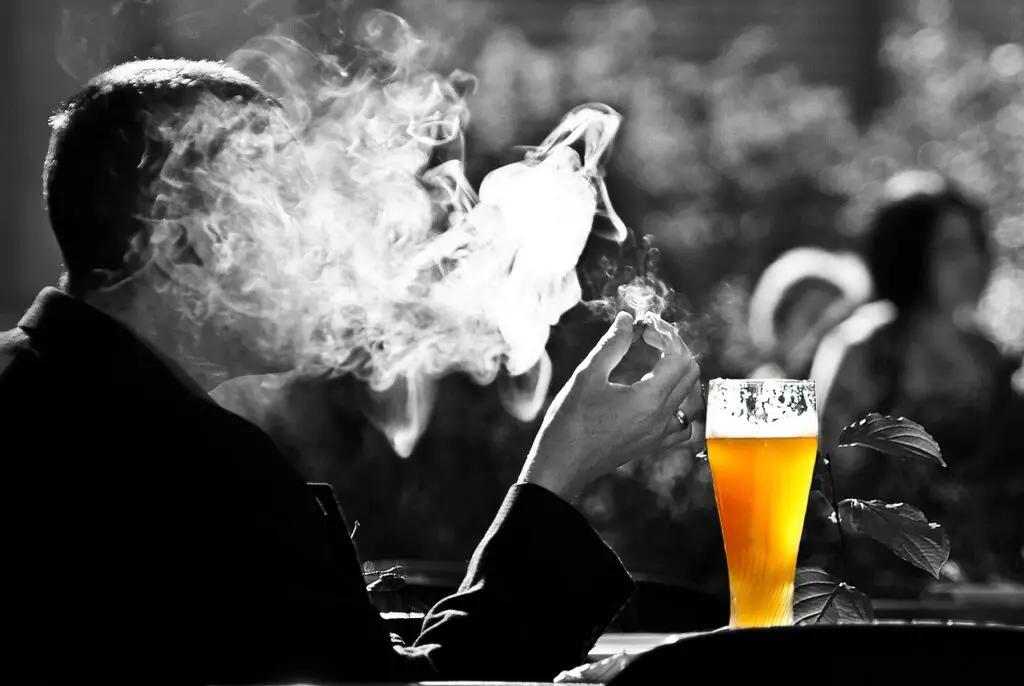
Wrapping It Up
Witbier is a distinctive beer style known for its hazy appearance, wheaty composition, and the subtle interplay of spices and botanicals. With its origins in Belgium and the Netherlands, it has a rich history and has recently grown in popularity. Whether enjoyed in the form of a Belgian witbier, American wheat ale or regional variations, white ale offers a refreshing and flavorful option for beer enthusiasts seeking a unique and approachable brew.

I am a young architect with a passion that goes beyond blueprints… it’s beer! undertherosebrewing.com is more than just a blog, it’s a manifestation of my lifelong dream to explore, read, and learn everything about beer. Join the blog on this unfiltered and genuine adventure into the heart of beer culture. Cheers!
